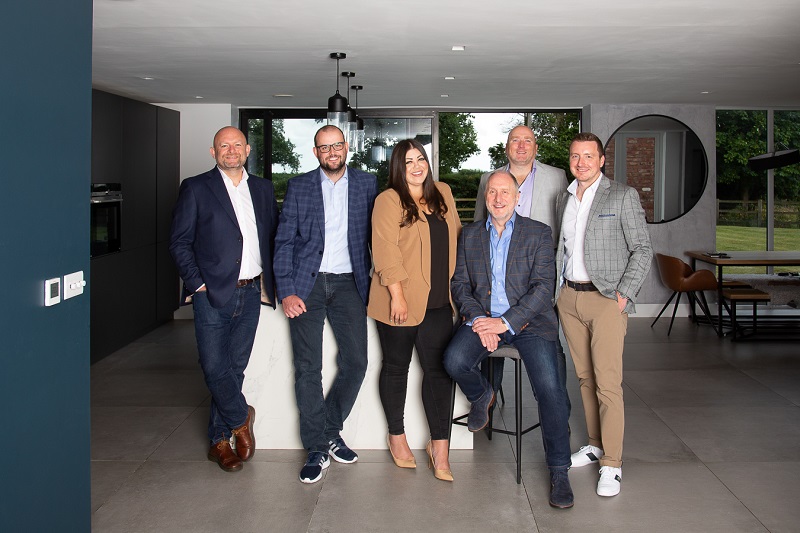Abadesi Osunsade is the Founder and CEO of Hustle Crew, a dynamic community that helps tech professionals cultivate a more diverse and inclusive sector. She speaks to DiversityQ about why you need to check your bias frequently, the power of inclusion education, and how business growth forum London & Partners helped her scale her business.
When did you realise that tech had an inclusion problem?
I have a very vivid memory of sitting next to my then colleague in the Amazon offices looking at the organisational chart to see who reported to Jeff Bezos. We were so disheartened to see so few women like us. On a personal level, I had already started to become aware of the lack of racial diversity in tech, not to mention other protected characteristics like disability and religion.
How did London & Partners’ Business Growth Programme, a free programme that offers tailored advice to London-based businesses, help you with Hustle Crew?
There’s a reason why people say your network is your net worth! It’s been incredible learning from thought leaders at workshops and even more so connecting with other enterprises in London’s buzzing ecosystem. My team and I have gained a lot to benefit the company and our individual professional development.
From the first-hand accounts, you receive at Hustle Crew – what are the challenges underrepresented groups experience in tech?
Most of us are completely unaware of the biases in our mind and often unintentionally make people with a different lived experience feel othered, feel like outsiders, or feel like they don’t belong. Underrepresented people face a lot of double standards; for example, when being assertive, they are judged as aggressive, or when highlighting issues that make them feel excluded, they are judged as being too sensitive. Underrepresented groups also struggle with achieving fair pay and getting promotions as they are often judged more harshly than peers from dominant groups.
How important was it for you to have the business led by consultants from underrepresented backgrounds?
In the world of education, stories enable individuals to learn quicker and retain what they learn. To teach structural oppression, it is extremely helpful for people who have experienced structural oppression to share the stories of what it was like and what that taught them about bias. It has been a really helpful way to capture the curiosity and imagination of training participants that want to cultivate more inclusive habits.
What can a business expect to learn from one of your workshops?
In many businesses, everyone from chief executives to individual contributors would love to do more to champion diversity and inclusion, but fear of getting it wrong holds them back. Our workshops are about creating shared competencies and increased confidence to take risks and measure results when moving the needle on diversity and inclusion. They are incredibly immersive experiences where attendees walk away feeling permanently transformed and confident to discuss these issues and take action on whatever is stopping their culture from being more representative of wider society.
Tell me about your work with Backed VC and Brandwatch – what help did they need to make their workplaces more inclusive, and what positive results have followed?
Tech communities like Backed and Brandwatch serve a global audience with diverse lived experiences, but their teams do not represent their diversity. One of the shared challenges we helped with was identifying which steps in their existing recruitment processes could be improved to optimise for inclusion and drastically increase the number of qualified and underrepresented candidates applying for roles. Participants were able to step out of their own lived experiences and assumptions and to start to experience the process through the lens of someone from an underrepresented group. Changes were put into place immediately, and these recruitment processes continue to be audited and improved on an ongoing basis.
What general support do you offer to underrepresented workers in tech?
From day one, we’ve been passionate about sharing tips and tricks to help underrepresented professionals overcome the unique challenges they face when trying to maximise their career potential. We share a lot of resources regarding negotiation to close the gender and race pay gap, and thousands have taken our free negotiation course with Future Learn. We also teach interview tactics to help people land their dream jobs and gain leadership skills to help them win promotions.
Making a culture change can seem overwhelming, with many leaders not knowing where to start. What actionable initial steps should tech firms make to foster positive change?
The renowned author Peter Drucker famously said, “what gets measured gets managed”, so it’s vital for companies to start measuring all relevant data points within the diversity and inclusion landscape, such as demographics of employees at every level, including sentiments of belonging across all levels and departments. Measuring this at regular intervals will help you benchmark your culture against the best in class and show you which initiatives are working.
Can you give an example of a bad cultural habit in a tech workplace that excludes ethnic minority groups and an example of a positive one?
A bad cultural habit is having an interview process that is not consistently executed, which doesn’t by default include a diverse group of interviewers. This means it’s one in which interviewers can pass on applicants due to concerns about culture fit. Data overwhelmingly shows us that where there is ambiguity in any decision-making process, bias and stereotypes will win, so it’s essential to have stringently transparent and consistent ways of assessing applicants and extending offers. Research also shows culture fit is often a cloak for other types of bias like affinity bias.
From the tech businesses you’ve worked with, what are the common misunderstandings they previously held about minority inclusion and what are the most positive mindset changes you’ve seen emerge?
The most common misunderstanding is that if you already have an underrepresented person in your company, like a woman or a member of the LGBT+ community, then there is zero possibility bias exists in your team. That is not reality. We all have biases. We all hold opinions that could be labelled sexist, racist or ableist. The solution is not to rid ourselves of bias because, sadly, our brains don’t work like that. Instead, the solution is to become so aware of our biases that we can mitigate them and reach our diversity and inclusion goals. A positive mindset change I’ve seen happen is when leaders are echoing back our mantra: “check your bias as often as you check your spelling.”
To find out more about the London & Partners Business Growth Programme that helped Hustle Crew in its scale-up journey, click here.









